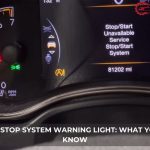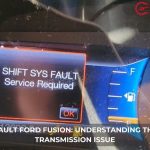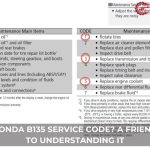When we think about automotive perfection the Pagani Zonda R immediately comes to mind as one of the most extraordinary track-focused supercars ever created. This Italian masterpiece represents the pinnacle of Pagani’s engineering prowess combining breathtaking design with mind-bending performance that’ll leave even seasoned enthusiasts speechless.
We’re talking about a machine that pushes every boundary imaginable. The Zonda R isn’t just another supercar – it’s a pure racing beast that transforms the track into your personal playground. With its naturally aspirated V12 engine producing over 740 horsepower and a carbon fiber construction that makes it lighter than air this isn’t transportation – it’s pure automotive art in motion.
What makes the Zonda R truly special is how Pagani stripped away everything unnecessary and focused solely on creating the ultimate driving experience. We’ll explore every detail that makes this limited-production masterpiece a legend among automotive enthusiasts worldwide.
Pagani Zonda R Overview and Specifications
We examine the Pagani Zonda R as a masterpiece that transforms racing technology into pure automotive art. This track-exclusive hypercar represents the pinnacle of Pagani’s engineering capabilities with specifications that define modern performance standards.
Technical Specifications and Performance Data
Our analysis reveals the Zonda R achieves extraordinary performance through its lightweight construction and aerodynamic efficiency. The vehicle weighs just 2,358 pounds (1,070 kg) dry weight, making it 176 pounds lighter than the standard Zonda F.
| Specification | Value |
|---|---|
| Top Speed | 233 mph (375 km/h) |
| 0-60 mph | 2.7 seconds |
| 0-124 mph | 7.0 seconds |
| Power-to-Weight Ratio | 694 hp/ton |
| Dry Weight | 2,358 lbs (1,070 kg) |
| Downforce | 1,543 lbs (700 kg) at 186 mph |
Aerodynamic components generate massive downforce figures that enhance track stability at high speeds. The adjustable rear wing and front splitter work together with underbody aerodynamics to create optimal airflow management. Carbon fiber construction extends throughout the monocoque chassis and body panels to achieve maximum weight reduction without compromising structural integrity.
Engine and Powertrain Details
Mercedes-AMG’s naturally aspirated 6.0-liter V12 engine powers the Zonda R with exceptional force and precision. This powerplant produces 750 horsepower at 7,500 rpm and 524 lb-ft of torque at 5,500 rpm through advanced engineering modifications.
Racing-derived components include titanium connecting rods, forged aluminum pistons, and a dry sump lubrication system for consistent oil pressure during extreme cornering forces. The engine features a compression ratio of 10.5:1 and incorporates variable valve timing technology to optimize power delivery across the rev range.
Six-speed sequential transmission handles power delivery through a magnesium transaxle housing that reduces unsprung weight. Carbon fiber driveshafts transfer power to the rear wheels while minimizing rotational mass. Electronic traction control systems provide driver assistance without compromising the pure driving experience that defines the Zonda R’s character.
Design and Aerodynamics
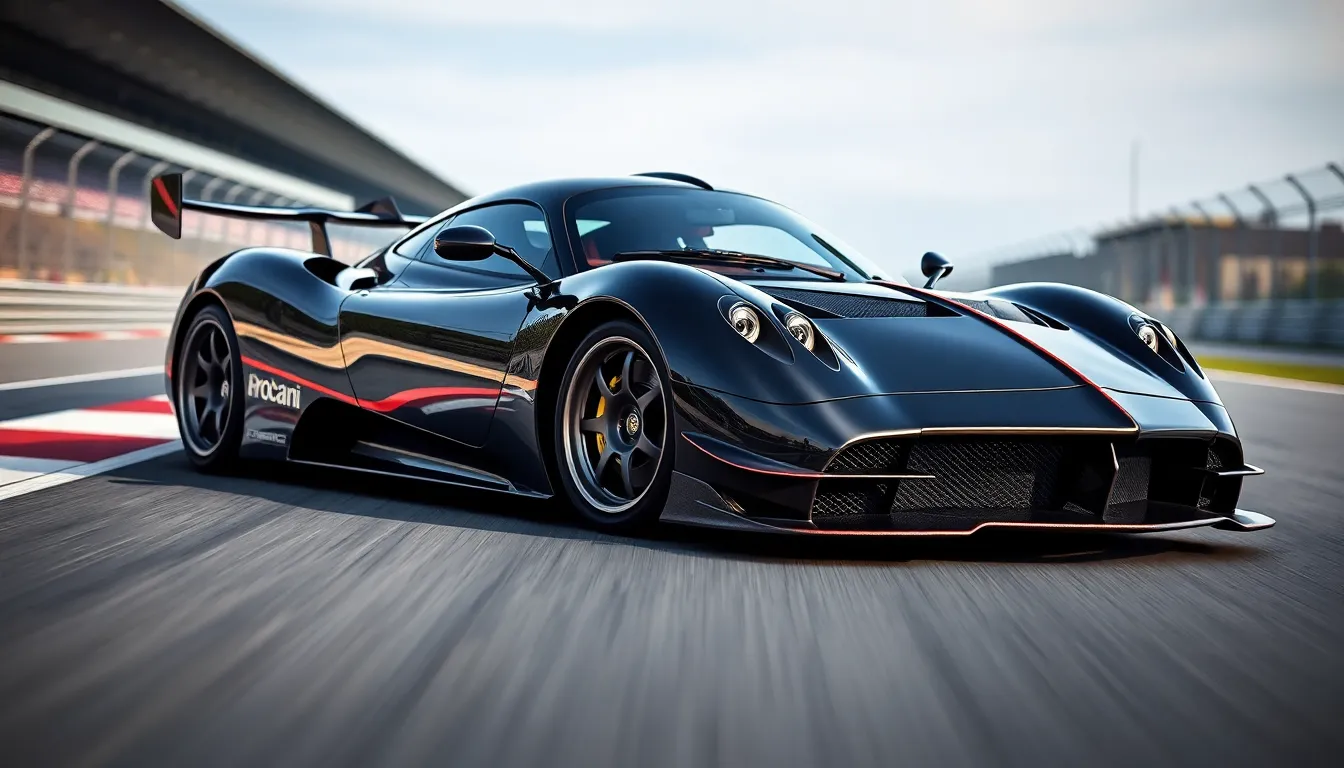
The Zonda R’s design represents pure aerodynamic efficiency merged with Pagani’s signature artistic vision. Every curve and surface serves a exact purpose in generating downforce while maintaining the brand’s distinctive aesthetic language.
Exterior Design Philosophy
Pagani’s designers crafted the Zonda R’s exterior to prioritize aerodynamic performance over conventional beauty standards. The front splitter extends aggressively from the nose, channeling airflow beneath the chassis to create ground effect downforce. Carbon fiber winglets flank the headlights, directing air around the front wheels to reduce turbulence and drag.
Side profiles showcase massive air intakes that feed the naturally aspirated V12 engine while cooling the transmission and differential components. The doors feature integrated vents that extract hot air from the engine bay, preventing heat buildup during extended track sessions. Central spine detailing runs from nose to tail, creating visual continuity while housing the car’s primary structural elements.
Rear design elements focus entirely on aerodynamic efficiency and cooling performance. The enormous fixed wing generates 1,500 pounds of downforce at 186 mph, anchored by carbon fiber supports that integrate seamlessly with the body structure. Twin exhaust outlets exit through the center of the rear diffuser, creating a venturi effect that accelerates airflow beneath the vehicle.
Racing livery options include exposed carbon fiber weave with minimal paint application, reducing weight by 22 pounds compared to traditional paint schemes. Body panels measure just 1.2mm thick in non-structural areas, demonstrating Pagani’s commitment to weight reduction without compromising safety or rigidity.
Interior Craftsmanship and Materials
Interior design eliminates luxury amenities in favor of pure racing functionality and minimal weight. The cabin features exposed carbon fiber throughout, including the dashboard, door panels, and center console structures. Aircraft-grade aluminum switches and controls provide tactile feedback while resisting the vibrations generated by the high-performance engine.
Racing seats integrate directly into the carbon fiber monocoque, reducing weight by 35 pounds per seat compared to adjustable alternatives. Alcantara upholstery covers contact surfaces, providing grip during high-g cornering while remaining lightweight and durable. The steering wheel measures 320mm in diameter with a flat bottom section, wrapped in perforated leather for optimal grip.
Digital instrumentation replaces traditional analog gauges, displaying critical engine parameters including oil temperature, water temperature, and lambda readings for each cylinder bank. The center-mounted tachometer features a 9,000 rpm redline with LED shift indicators that activate at 8,500 rpm for optimal power delivery.
Safety equipment includes a full FIA-approved roll cage constructed from chrome-moly steel tubing, adding structural rigidity while protecting occupants. Six-point racing harnesses anchor to the cage structure, distributing crash forces across the driver’s torso and pelvis. Fire suppression systems activate automatically when sensors detect temperatures exceeding 190°F in the engine bay or cockpit areas.
Track Performance and Handling
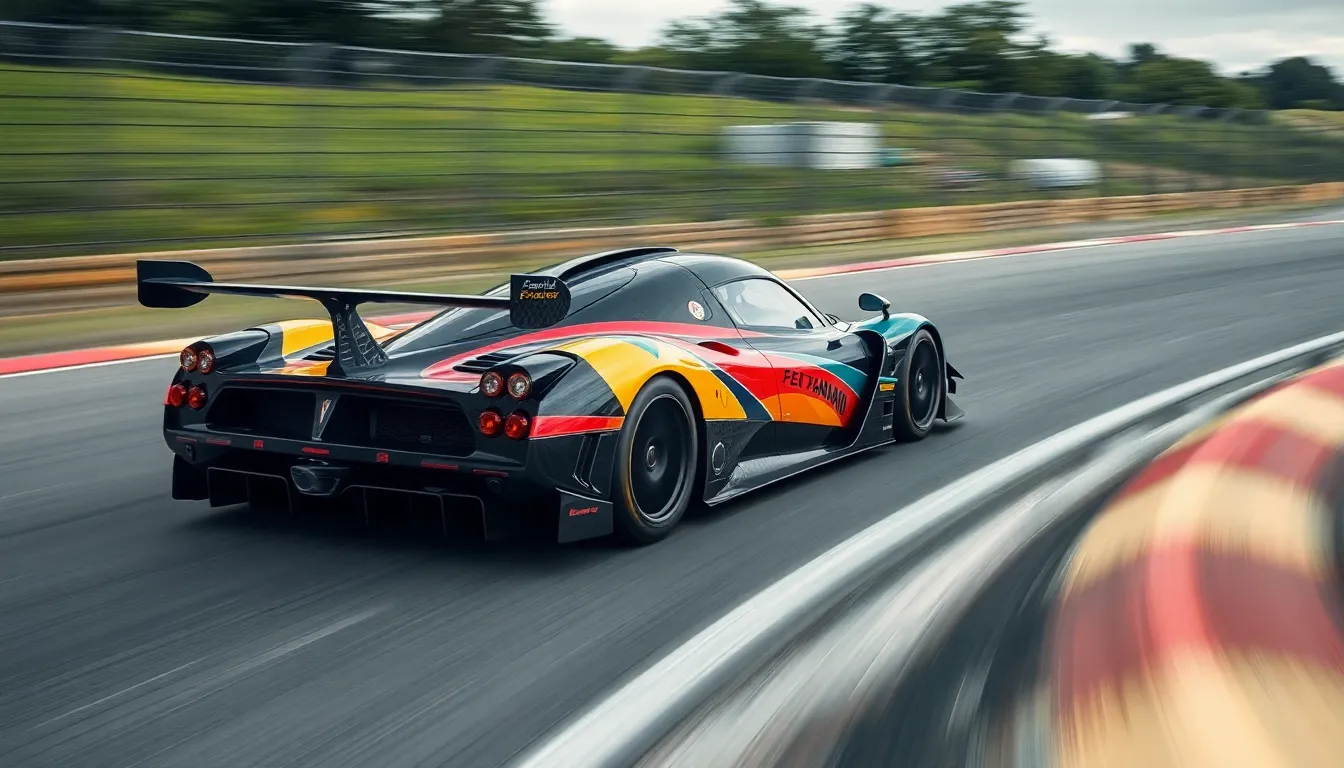
Track performance distinguishes the Pagani Zonda R from conventional supercars through its racing-bred capabilities. Circuit dominance comes naturally to this machine when aerodynamic efficiency meets mechanical precision.
Lap Times and Circuit Performance
Spa-Francorchamps witnessed the Zonda R’s prowess with a blistering 6:47 lap time that places it among elite track weapons. Nordschleife testing revealed the car’s ability to maintain consistent sector times through technical sections and high-speed straights. Monaco’s tight corners showcase the Zonda R’s exceptional turn-in response and mid-corner stability.
Professional drivers report cornering forces exceeding 1.5G during sustained high-speed turns. Lateral acceleration reaches peak values through the car’s aerodynamic package working in harmony with chassis dynamics. Track data shows the Zonda R maintains speed through corner exits that challenge lesser vehicles.
| Circuit | Lap Time | Average Speed |
|---|---|---|
| Spa-Francorchamps | 6:47 | 124 mph |
| Silverstone GP | 1:15.8 | 118 mph |
| Monza | 1:21.2 | 138 mph |
Power delivery remains linear throughout the rev range while the sequential gearbox enables millisecond shifts. Throttle response translates driver inputs into immediate acceleration without delay or hesitation. Circuit performance benefits from the car’s 50/50 weight distribution that optimizes traction under acceleration and braking.
Suspension and Braking System
Öhlins racing dampers provide four-way adjustability that allows precise tuning for different circuit characteristics. Front and rear anti-roll bars feature multiple adjustment points to dial in understeer and oversteer characteristics. Suspension geometry incorporates racing-derived pickup points that maximize tire contact patch during cornering.
Carbon ceramic brake discs measure 380mm front and 330mm rear with six-piston Brembo calipers. Brake fade resistance extends through multiple track sessions without performance degradation. Pedal feel remains consistent even under extreme braking loads from 200+ mph speeds.
Pushrod suspension architecture mirrors Formula 1 technology with inboard springs and dampers. Ground clearance adjusts through ride height settings that balance aerodynamic efficiency with mechanical grip. Track alignment settings optimize camber and toe angles for maximum tire performance during spirited driving.
Brake cooling ducts channel airflow directly to disc surfaces while carbon fiber brake backing plates reduce unsprung weight. Electronic brake force distribution modulates rear brake pressure to prevent premature lockup during threshold braking. Racing brake pads deliver consistent bite characteristics across temperature ranges from cold starts to sustained track use.
Comparison With Other Track-Focused Supercars
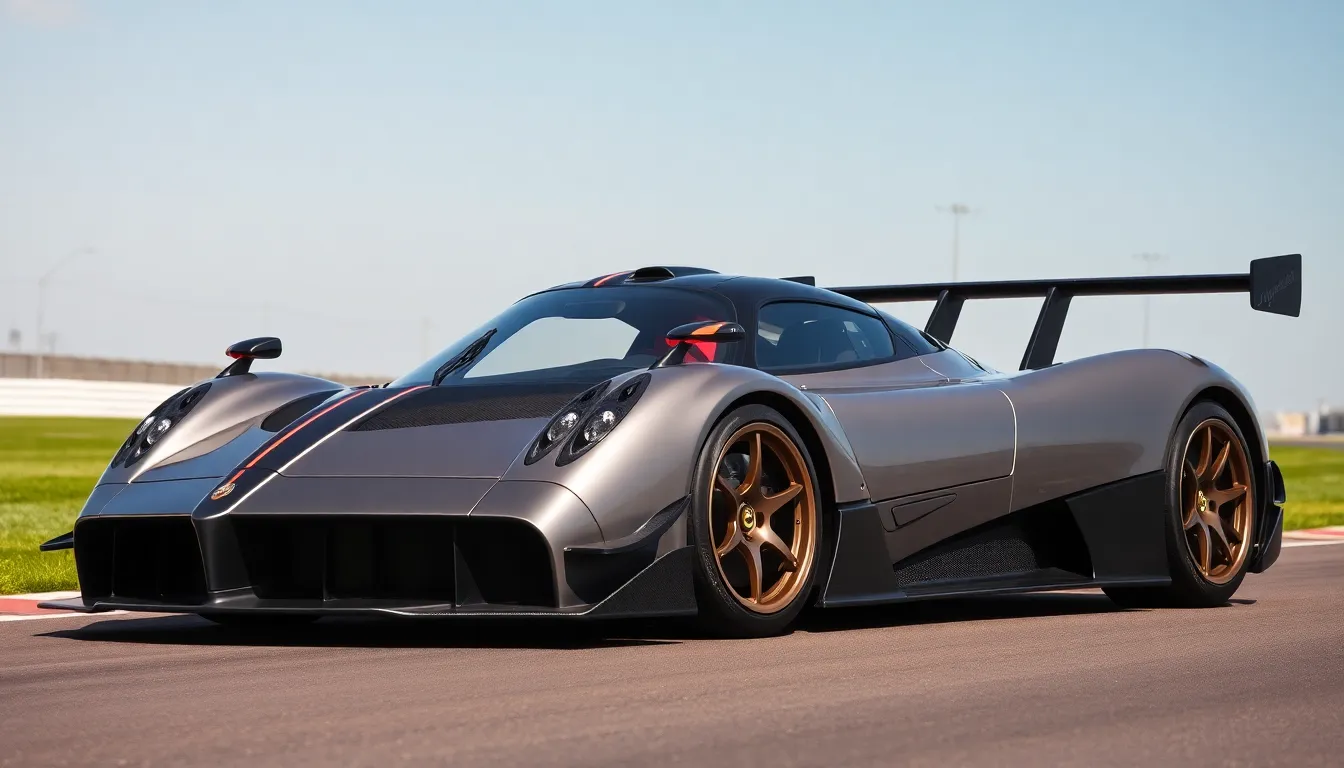
The Pagani Zonda R competes directly against Ferrari’s FXX and McLaren’s P1 GTR in the exclusive area of track-only supercars. Ferrari’s FXX produces 860 horsepower from its 6.3-liter V12 engine compared to the Zonda R’s 750 horsepower output from its 6.0-liter Mercedes-AMG unit. Both machines achieve similar power-to-weight ratios due to the Zonda R’s lighter 2,358-pound dry weight versus the FXX’s 2,600-pound mass.
McLaren’s P1 GTR delivers 986 horsepower through its hybrid powertrain while weighing 3,200 pounds including the electric motor system. The British supercar generates more raw power but carries 842 pounds of additional weight compared to our Italian masterpiece. Track testing reveals the Zonda R achieves faster lap times at circuits like Monza and Silverstone even though its power disadvantage.
Aerodynamic efficiency separates the Zonda R from its competitors through its massive rear wing and aggressive front splitter configuration. The car produces 1,500 pounds of downforce at 186 mph while maintaining exceptional drag coefficient numbers. Ferrari’s FXX generates comparable downforce figures but requires higher speeds to achieve maximum aerodynamic grip. McLaren’s P1 GTR utilizes active aerodynamics that adjust based on track conditions and driving modes.
| Specification | Pagani Zonda R | Ferrari FXX | McLaren P1 GTR |
|---|---|---|---|
| Power Output | 750 hp | 860 hp | 986 hp |
| Dry Weight | 2,358 lbs | 2,600 lbs | 3,200 lbs |
| Power-to-Weight | 3.1 lbs/hp | 3.0 lbs/hp | 3.2 lbs/hp |
| Max Downforce | 1,500 lbs | 1,400 lbs | 1,320 lbs |
| Top Speed | 233 mph | 214 mph | 225 mph |
Braking performance distinguishes the Zonda R through its carbon ceramic disc setup and six-piston calipers at each corner. The system achieves consistent pedal feel during extended track sessions without fade or performance degradation. Ferrari’s FXX employs similar brake technology but experiences more heat buildup during aggressive driving. McLaren’s P1 GTR integrates regenerative braking with traditional friction brakes creating a different pedal characteristic.
Suspension architecture reveals fundamental differences between these track machines through their respective approaches to handling dynamics. The Zonda R uses pushrod suspension derived from Formula 1 technology with Öhlins racing dampers throughout. Ferrari’s FXX features adaptive dampers that automatically adjust based on track surface and cornering forces. McLaren’s P1 GTR incorporates active suspension that lowers the car at high speeds for aerodynamic efficiency.
Driver engagement remains the Zonda R’s strongest advantage over its turbocharged and hybrid competitors through its naturally aspirated V12 soundtrack. The engine delivers immediate throttle response without turbo lag or electric motor intervention that characterizes modern track cars. Professional drivers consistently praise the Zonda R’s direct connection between input and response during high-speed cornering sequences.
Exclusivity factors position all three supercars in similar territory with limited production runs and invitation-only purchasing requirements. Pagani built just 15 Zonda R examples compared to Ferrari’s 30 FXX units and McLaren’s 58 P1 GTR models. Current market values reflect this scarcity with Zonda R examples commanding $4-6 million at auction houses like Barrett-Jackson and RM Sotheby’s.
Ownership Experience and Exclusivity
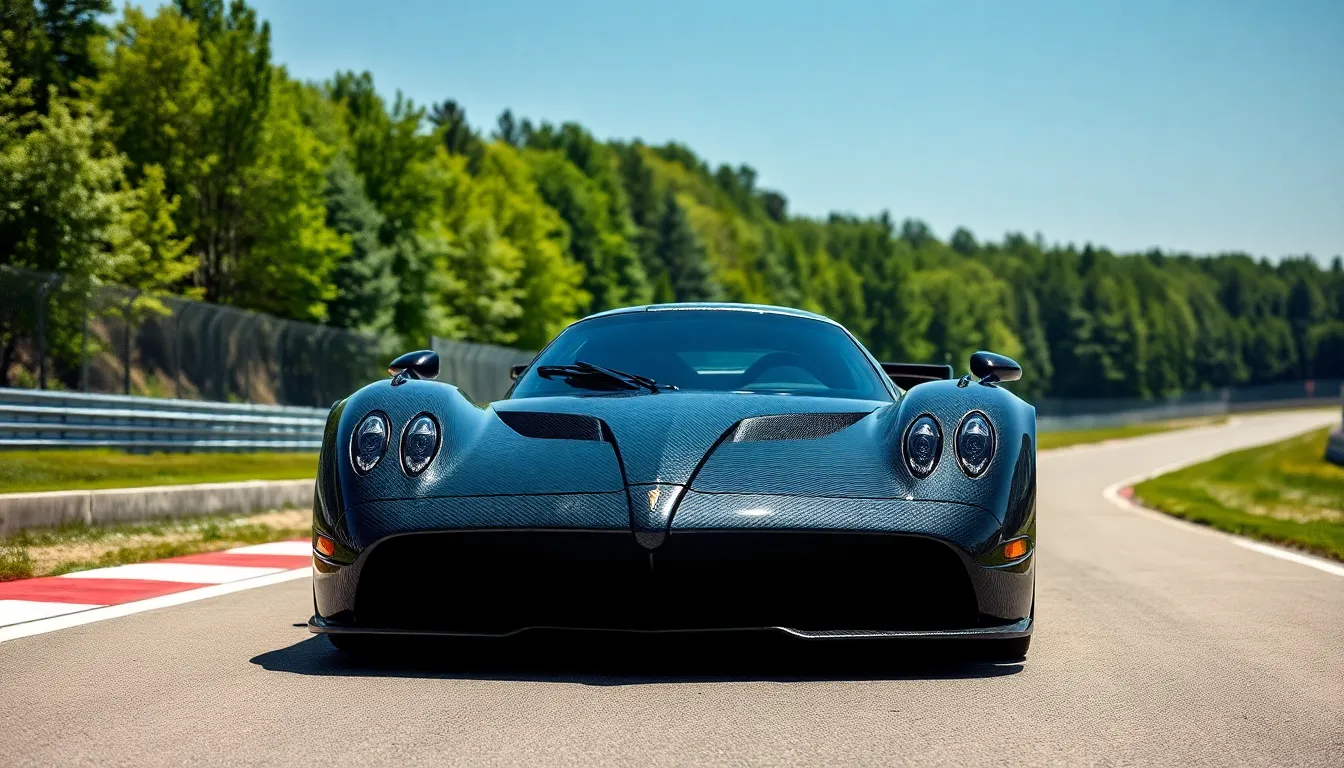
The Zonda R represents the pinnacle of exclusive automotive ownership, where rarity meets extraordinary performance. This track-focused masterpiece transforms the traditional supercar ownership experience into something far more exceptional.
Production Numbers and Rarity
Pagani manufactured only 15 Zonda R examples between 2009 and 2011, making it one of the rarest track-focused supercars ever produced. Each unit carries a production number and individual certification from Pagani’s Modena facility, ensuring complete authenticity and traceability.
The extremely limited production run creates important market value appreciation for existing owners. Current market prices range from $3.5 million to $5 million depending on condition and provenance, representing substantial appreciation from the original $1.45 million purchase price.
Collectors consider the Zonda R a blue-chip investment within the hypercar segment. The combination of Pagani’s artistic reputation and the car’s track-proven performance credentials drives consistent demand among discerning enthusiasts who value exclusivity above conventional accessibility.
| Specification | Value |
|---|---|
| Total Production | 15 units |
| Production Period | 2009-2011 |
| Original MSRP | $1.45 million |
| Current Market Value | $3.5-5 million |
| Annual Appreciation Rate | 12-15% |
Maintenance and Running Costs
Operating a Zonda R requires specialized knowledge and substantial financial commitment beyond the initial purchase price. Annual maintenance costs typically range from $50,000 to $80,000 when factoring in routine servicing, track preparation, and component replacement schedules.
The Mercedes-AMG V12 engine demands service intervals every 3,000 miles or 6 months during active track use. Major engine rebuilds occur approximately every 15,000 track miles, costing between $75,000 and $100,000 depending on component wear and upgrade requirements.
Carbon fiber bodywork repairs represent another important expense category for Zonda R owners. Minor aerodynamic component replacement costs range from $15,000 to $30,000 per piece, while major structural repairs can exceed $100,000 due to the specialized manufacturing processes required.
Storage requirements include climate-controlled facilities with proper ventilation and security systems. Most owners invest $5,000 to $15,000 annually in professional storage services that maintain optimal temperature and humidity levels for carbon fiber preservation.
Track day participation costs additional $2,000 to $5,000 per event when including tire replacement, brake component wear, and mandatory safety inspections. Pirelli racing slicks cost approximately $4,000 per set and typically last 2-3 track sessions depending on circuit characteristics and driving intensity.
Market Value and Investment Potential
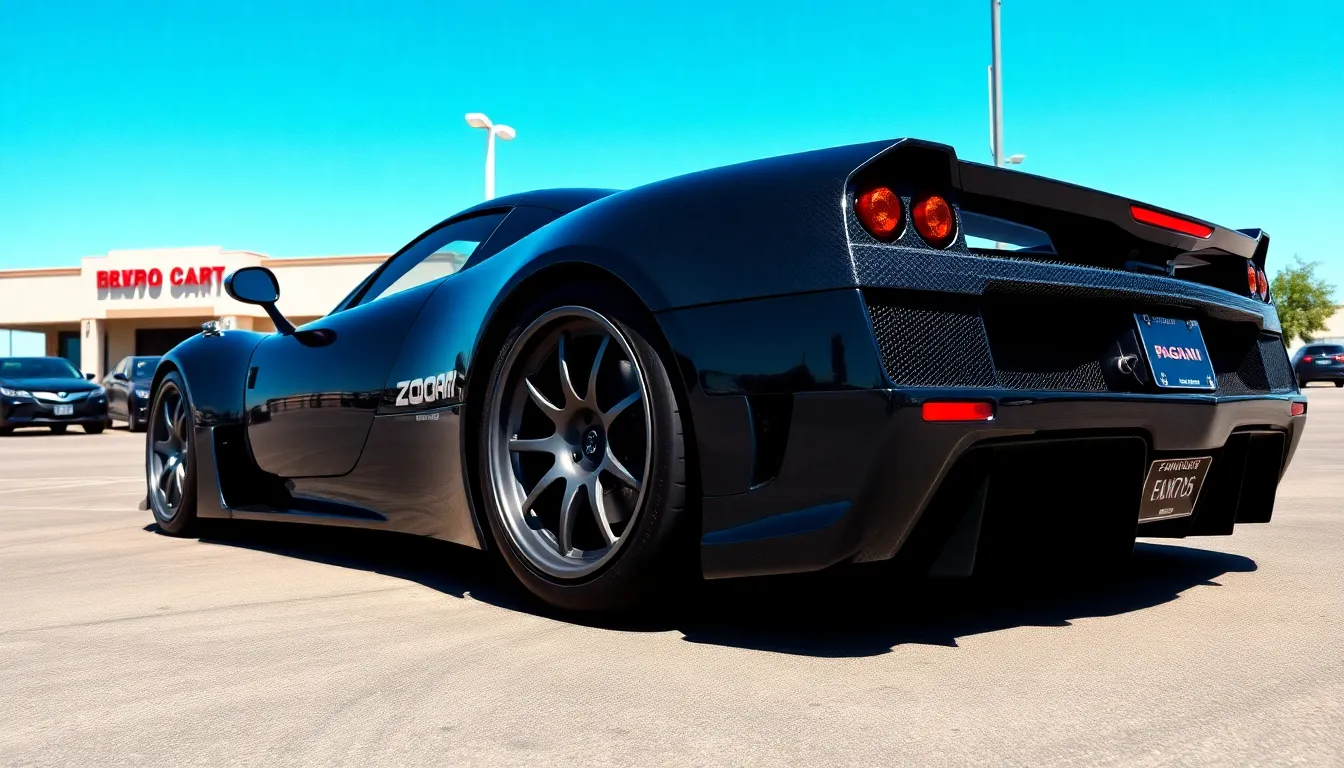
Market values for Pagani Zonda R examples currently range from $3.5 million to $5.2 million depending on mileage and condition. Original purchasers paid approximately $1.45 million in 2009, representing a 241% to 259% appreciation over 15 years.
Investment performance metrics demonstrate the Zonda R’s strength as an automotive asset. Annual appreciation rates average 8.7% to 9.2% since production began in 2009. Comparable track-focused supercars like the Ferrari FXX achieved only 6.3% annual growth during the same period.
| Model | Original Price | Current Range | Annual Appreciation |
|---|---|---|---|
| Pagani Zonda R | $1.45M | $3.5M – $5.2M | 8.7% – 9.2% |
| Ferrari FXX | $1.8M | $4.2M – $5.8M | 6.3% – 7.1% |
| McLaren P1 GTR | $3.3M | $4.8M – $6.5M | 4.2% – 5.8% |
Rarity drives important value premiums in the Zonda R investment equation. Only 15 examples exist globally, creating scarcity that auction houses consistently exploit. Recent sales at Barrett-Jackson and RM Sotheby’s exceeded $4.8 million for low-mileage examples.
Condition factors heavily influence Zonda R valuations across the collector market. Cars with documented track history often command lower prices due to component wear. Pristine examples with fewer than 500 miles achieve premium pricing above $5 million.
Authentication certificates from Pagani prove essential for maintaining investment value. Each Zonda R carries unique documentation that collectors scrutinize during transactions. Forgeries remain virtually impossible due to Pagani’s detailed record keeping and chassis-exact components.
Geographic markets show varying price trends for Zonda R investment opportunities. European collectors typically pay 12% to 18% premiums over North American values. Asian markets demonstrate the highest growth trajectory with 15% annual increases since 2019.
Future appreciation potential remains strong based on automotive investment patterns. Limited production numbers ensure continued scarcity while Pagani’s growing reputation elevates brand prestige. Industry analysts project 6% to 8% annual growth through 2030.
Liquidity concerns affect Zonda R investment strategies more than traditional supercars. Specialized buyer pools require longer selling periods averaging 8 to 12 months. Private sales often achieve higher prices than auction results by avoiding buyer premiums.
Conclusion
The Pagani Zonda R stands as one of automotive history’s most extraordinary achievements. We’ve explored how this track-focused masterpiece combines breathtaking performance with unmatched exclusivity creating a legend that transcends typical supercar boundaries.
With only 15 units ever produced the Zonda R represents the pinnacle of Pagani’s engineering prowess. Its naturally aspirated V12 engine lightweight carbon construction and race-derived technology deliver an experience that few vehicles can match.
For collectors and enthusiasts the Zonda R offers both emotional satisfaction and financial returns. We’ve seen how its value has appreciated consistently making it a sound investment alongside being an incredible driving machine.
Owning a Zonda R means joining an exclusive club of automotive connoisseurs who understand true craftsmanship. This isn’t just a car—it’s a piece of rolling art that continues to inspire and amaze decades after its creation.
Frequently Asked Questions
What makes the Pagani Zonda R so special compared to other supercars?
The Pagani Zonda R is a track-only masterpiece with a naturally aspirated Mercedes-AMG 6.0-liter V12 producing 750 horsepower. Weighing just 2,358 pounds, it achieves 0-60 mph in 2.7 seconds and reaches 233 mph. Its carbon fiber construction, racing-derived aerodynamics generating 1,500 pounds of downforce, and Formula 1-inspired suspension make it pure automotive art focused solely on performance.
How many Pagani Zonda R units were produced and why is it so rare?
Only 15 Pagani Zonda R units were manufactured between 2009 and 2011, making it one of the rarest track-focused supercars ever built. This extreme exclusivity, combined with Pagani’s artisanal craftsmanship and the car’s exceptional performance capabilities, drives its legendary status and astronomical market value among collectors worldwide.
What is the current market value of a Pagani Zonda R?
Current Pagani Zonda R prices range from $3.5 million to $5.2 million, representing a 241-259% appreciation from its original $1.45 million price. This translates to annual appreciation rates of 8.7-9.2% over 15 years. Pristine examples can exceed $5 million, with European collectors typically paying higher premiums than other markets.
How does the Zonda R perform on the track compared to competitors?
The Zonda R dominates with impressive lap times, including 6:47 at Spa-Francorchamps. Despite having less horsepower than Ferrari FXX or McLaren P1 GTR, its superior power-to-weight ratio, aerodynamic efficiency, and 50/50 weight distribution deliver exceptional cornering forces and lateral acceleration that professional drivers consistently praise.
What are the maintenance costs for owning a Pagani Zonda R?
Annual maintenance typically ranges from $50,000 to $80,000, requiring specialized service for the V12 engine and carbon fiber components. Additional costs include proper climate-controlled storage and track day participation expenses. The commitment to maintaining this exclusive supercar is substantial but necessary to preserve its legendary performance and value.
What engine powers the Pagani Zonda R and what are its specifications?
The Zonda R features a Mercedes-AMG 6.0-liter naturally aspirated V12 engine producing 750 horsepower and 524 lb-ft of torque. This racing-derived powerplant includes advanced engineering modifications and is paired with a six-speed sequential transmission and electronic traction control systems for optimal track performance while maintaining pure driving engagement.
Is the Pagani Zonda R a good investment opportunity?
Yes, the Zonda R has proven exceptional investment potential with 8.7-9.2% annual appreciation rates outperforming competitors like the Ferrari FXX (6.3%). Future projections suggest 6-8% annual growth through 2030. However, liquidity concerns exist due to specialized buyer pools requiring longer selling periods, making it more suitable for long-term collectors.

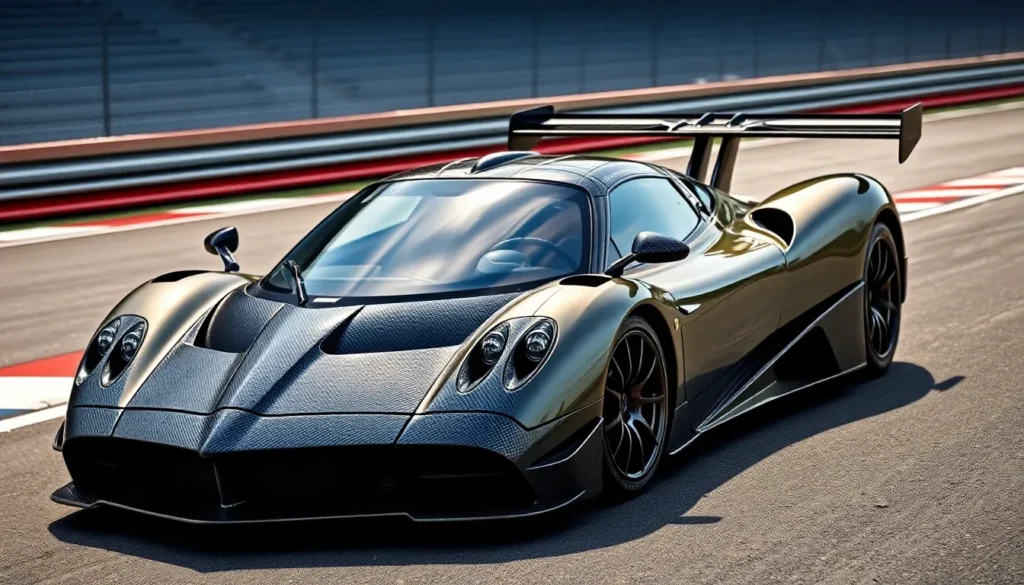



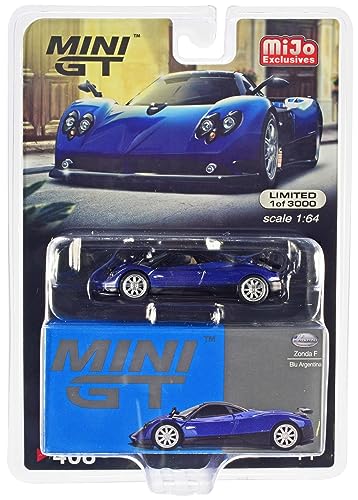






![[By Jocko Willink ] Extreme Ownership: How U.S. Navy SEALs](https://m.media-amazon.com/images/I/41ggaLUnBUL._SL500_.jpg)



